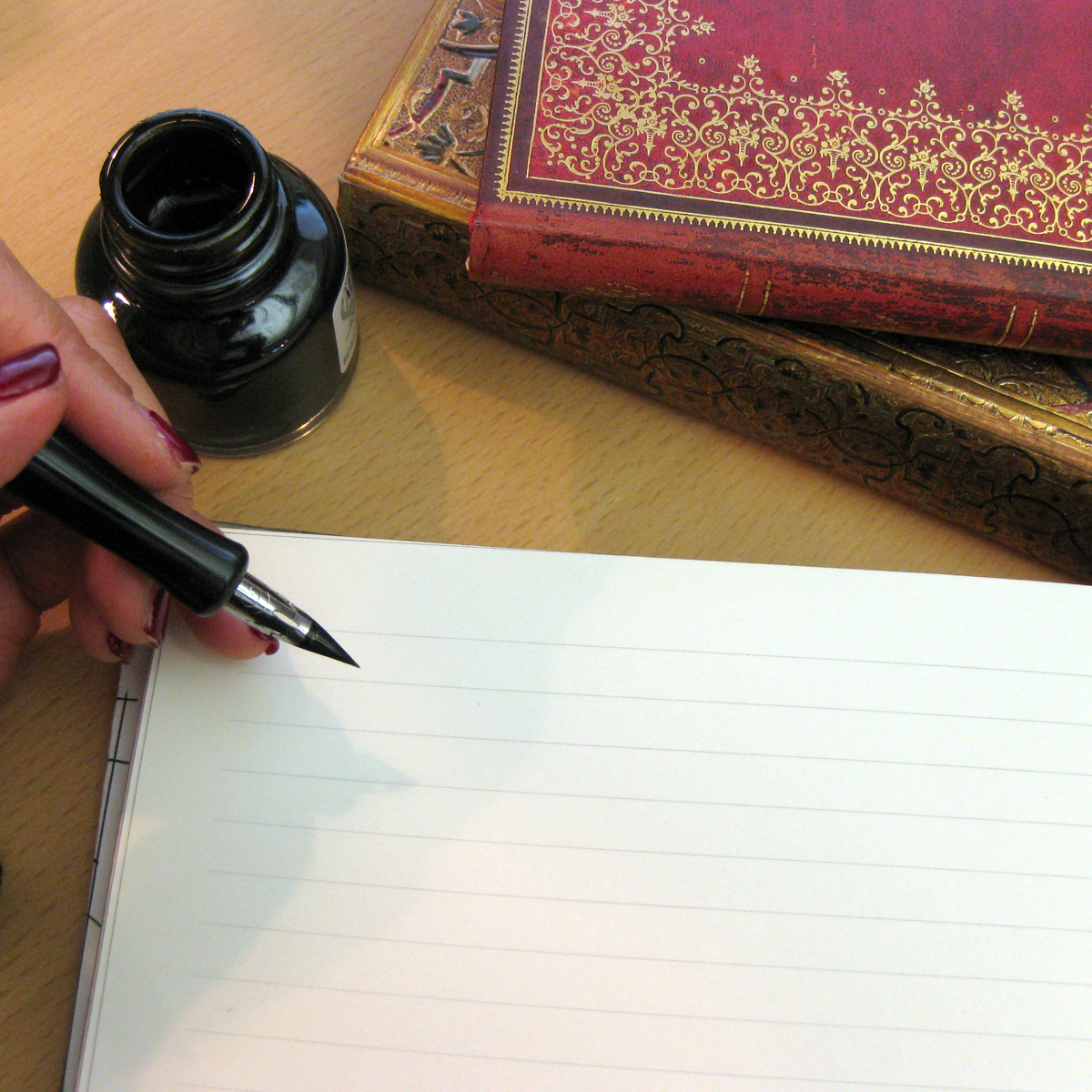
Last March, we posted a Writing Wednesday on the topic of graphology – the field of handwriting analysis. The theory there is that the size, shape and spacing of one’s handwriting can give away intimate personality details. But what happens if your writing is suggesting something about you that isn’t quite right?
If your handwriting style is a source of consternation, it may be worth your time to work on improving this oft-used skill. Changing something so ingrained in your muscle memory will be quite difficult, so we hope these tips will help make the process feel even a little bit smoother!
1) Don’t Reinvent the Wheel
After decades of writing, your style is already fairly set. Improving your handwriting is going to be hard enough, but completely starting over will be next to impossible. Before you set out to re-learn how to write based on someone else’s style that you admire, take a moment to see what is working about your own. Try copying down a few paragraphs from a printed work and see what shapes stand out. If your handwriting is quite open, for instance, work on refining these loopy letters, rather than deciding you are going to become a tiny block printer.
2) Do Find the Major Flaw
Once you’ve written out your handwriting sample, you can look for what you want to change. Rather than focusing on individual letters or other nit-picky aspects, look for an overall problem in your shaping, spacing, alignment, size, lines or slant. What is the part that is most irksome to you? That should be the first thing you work on fixing.
3) Don’t Try it All at Once
Yes, you may find things you wish to change about your spacing, size and slant, but trying to fix them all at once will be an overwhelming and counterintuitive task. Break this down into a series of goals, and choose one to begin with. Once you’ve fixed your spacing (for example) to your satisfaction and it feels natural to write with this adjustment made, you can move on to tackling the next part of the project.
4) Do Play the Field
Try out a few styles before settling on the change that will work for you. Now is the time to find some examples of writing that you think look great, and analyse what it is that you like about them. The key here is to practice on a few different options. You may, for instance, really love the tight penmanship of your favourite aunt, but that doesn’t mean her style will be the right fit for you.
5) Don’t Forget to Stretch
We don’t emphasiss the “muscle memory” component of handwriting for nothing – there are many tiny bodily components that go into this task. Stretch out your hand and wrist before putting pen to paper and you’ll notice how much more smoothly your writing flows from the very beginning.
6) Do Keep Writing!
When you get down to it, the important part is not the style of your writing, but the substance. The flourishes of really great penmanship will never mask an unclever story, so use your handwriting improvement as an excuse to create, rather than focusing only on the aesthetic form!
About Paperblanks®: At Paperblanks®, we believe that art should have a place in all aspects of life. That’s why we follow the artist’s way in everything we do – creating, crafting and releasing designs we believe have the power to touch people. For more about Paperblanks®, go to our website at paperblanks.com.







Looking at journaling, it took me years to get where I wanted: small spaced and tight lines of neat handwriting which is super tiny. For notes I still go crazy though 😀
The writing in the last picture looks so pretty~ Would you be able to tell me what pen is used in the first picture though?
Hi Burcu,
The pen in the first photo belongs to one of our graphic designers. She says that it’s a “simple calligraphy pen holder with the G nib attached” and is “pretty good for beginners.”
All the best,
The Paperblanks® Team